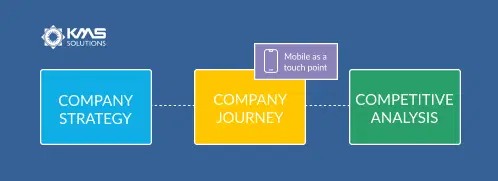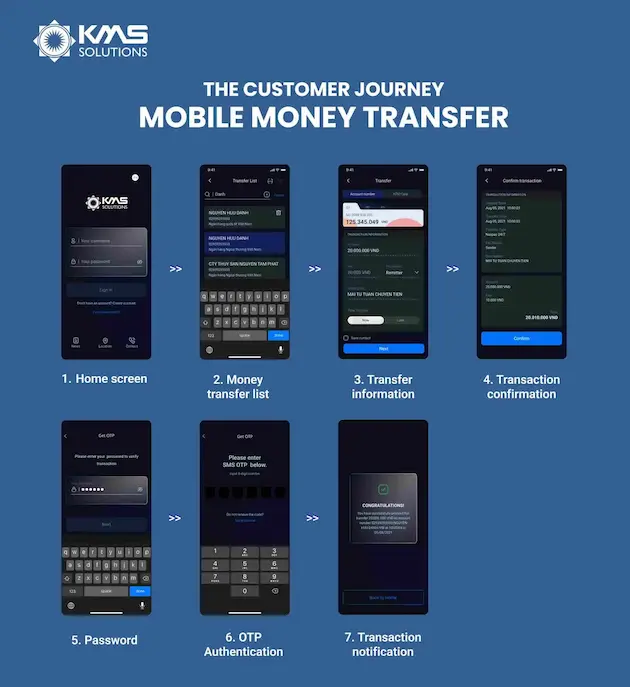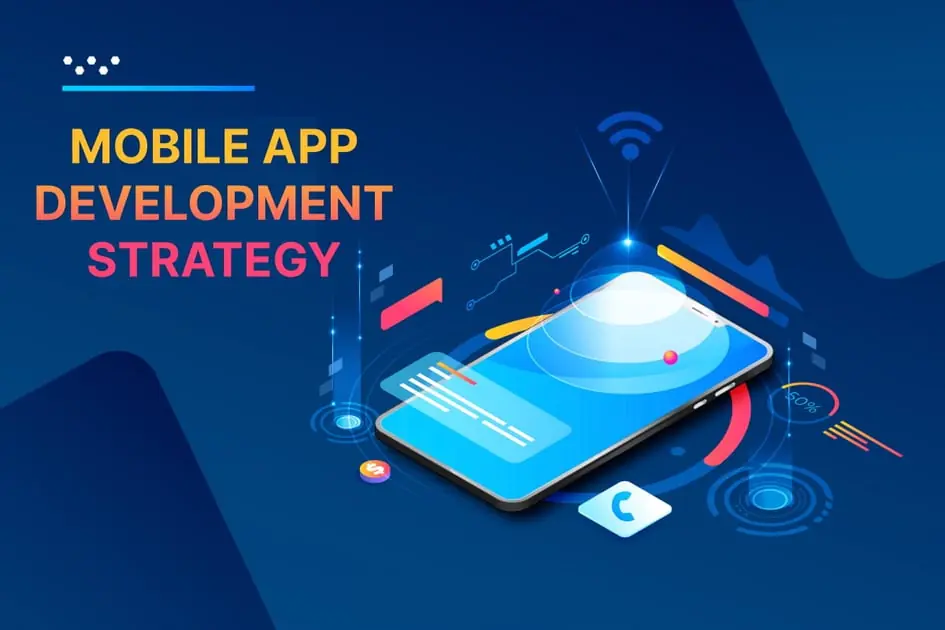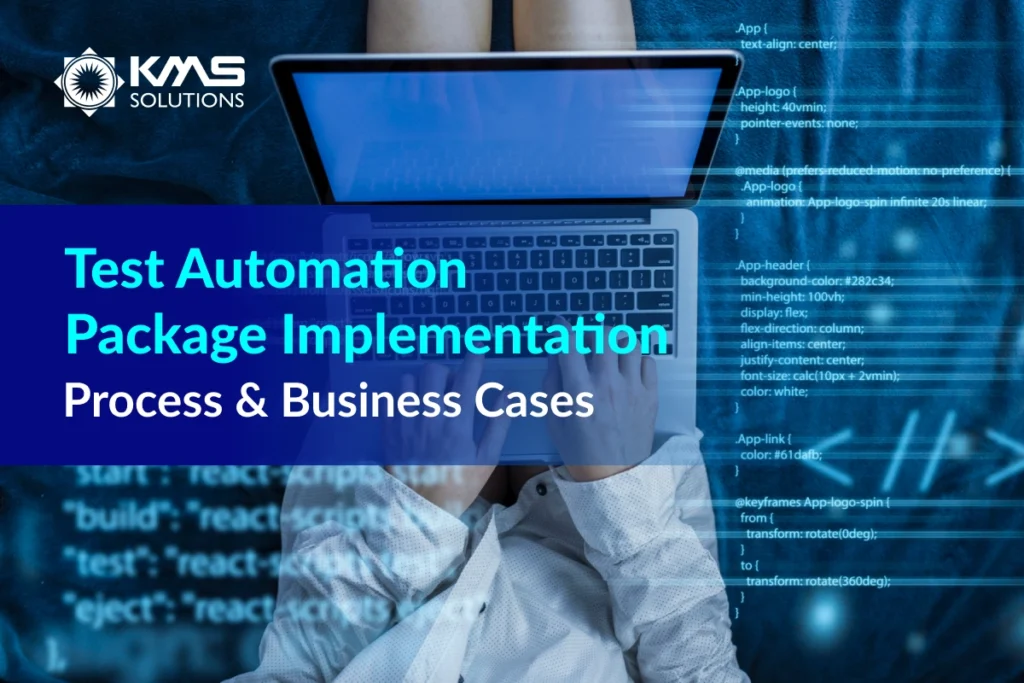Every year, there are millions of mobile applications published, but only a few of those are widely used. To make your app stand out from the competitive market, a robust mobile development strategy is paramount. Unfortunately, not many enterprises start with an intensive mobile app strategy to create a product that can attract more downloads and even boost your business ROI.
“Mobile apps strategy” is a statement that encompasses a wide range of crucial aspects – it’s not just about hiring software engineers to create a mobile app, but understanding how the product will integrate into the corporation, engage with prospects, generate revenue, and become a business’s valuable digital asset.
As there are many key considerations to take into account and their complexity, developing a mobile app strategy can be a daunting task. This article will guide you on how to create a comprehensive strategy that drives impacts.
Step 1: Analyze business strategy, customer expectations & competitors
When it comes to developing a mobile apps strategy, it’s crucial to ensure the plan will adhere to the corporation’s overall strategy, including its mission, competitive advantages, values, and existing customer journey.
In this stage, you should involve stakeholders from different departments to better understand the company’s current process and priorities and, from that, map out the appropriate touchpoints, strategies, and directives.

1.1 Ensure your company’s overall strategy is well-defined
The company’s strategy lays forth a comprehensive course of action that will be taken to meet desired objectives and strengthen its financial stability. Thus, identifying it at the beginning will help you ensure the mobile app strategy is set towards the ultimate goals.
To understand the business strategy thoroughly, here’re some critical questions worth considering:
- What are your desired outcomes for the next five years?
- What is the mission of your business?
- What are your annual key performance indicators (KPIs)? Will they be changed in the future?
Moreover, considering the business strategic direction, such as going differentiation by providing the most cutting-edge products, investing in niches to gain the market share, following the leaders, etc., at the first stage will help you visualize the strategy that your mobile app will follow.
1.2 Know and understand your customer
A successful mobile app development strategy is often fueled by knowing your target customers, their requirements and expectations, and ways to help them address those needs. Several factors that may influence the digital customer experience are slow connectivity, bad app execution, poor UI, and more. A better user experience can increase the likelihood of your app’s adoption and long-term success.
To increase digital user experience, you will need to understand customer behaviors, their journey, their intention/trends and demand in using a mobile app, customer portrait, their lifetime value, and some relevant aspects such as total purchases, services they frequently use, etc.
By analyzing these insights, you can understand customer needs and expectations, as well as their pain points, to have proper solutions to address. Gaining buyer personas is one of the vital steps to identifying your app’s functionality.
Since the mobile app’s value is determined by how customers interact with it, creating a customer journey map to draw out all of their touchpoints is one of the best ways. By mapping the customer journey, your team can understand the end-to-end flow, the most influential touchpoints, and how these interactions can be better served.

Figure: Customer journey of Mobile Banking Transfer
1.3 Understand your competitors before jumping into the market
Analyzing what rivals are doing can help businesses define the market baseline and initiatives of the mobile app before actually developing it. Some reasons why you should examine the tactics of your competitors before developing your own include:
- The rivals’ strategy will serve as a common set of best practices that can be implemented into your app’s list of features and functionalities.
- During your competitive analysis, you may inadvertently discover things they may do ineffectively. Make a list of ways you can outperform the competition.
- It also helps differentiate your mobile app from the competition by offering unique designs or features.
Step 2: Define your enterprise mobile app strategy
After clarifying the overall business strategy and dependencies, the development team will need to consider the mobile strategy. It’s worth concentrating on the mobile app’s use cases, the latest technology trends, the resources required to execute your ideas, and the technology stack needed during the development.
2.1 Craft the elevator pitch
You can get inspiration for the mobile app by learning about their using habits and pain points, researching solution-based features, and analyzing your competitors’ – which have been done in the initial phase.
Additionally, taking into account the latest trends driving mobile app development also provides you with ideas for creating a successful mobile app:
- Super App: essentially serves as a one-stop solution for a wide range of services. The demand for super apps is continuously growing since they offer a seamless customer experience and allow users to perform many activities, from transferring money to making online reservations, within a single platform.
- Voice Technology: this technology has completely taken the world by storm, with approximately 70% of mobile phone users claiming they have used voice commands to perform some activities.
Above all, the mobile app ideas should tie in nicely with the organization’s overall strategy for the long-term and be realistic. Moreover, it must be delivered within the committed budget and timeframe.
2.2 Determine the resources and budget needed for your mobile strategy
When developing a mobile app strategy, you need to focus on these two typical types of expenses: capital expenses (headcount) and operating expenses.
The costs of development can be higher in the first year and then may reduce over time, as the main concentration is optimizing and adding other functionalities. Hence, a multi-year budget plan is a possible way to go about this.
2.3 Choose the Agile approach as a core component of your mobile app strategy
By implementing the waterfall software development methodology, you will need to decide what to create and then construct it, knowing that any modifications beyond the initial design phase will be cost-prohibitive. For the waterfall approach, changes are limited, and only what was agreed to upfront will be executed. Since the projects get delivered in large chunks, this approach is no longer suitable.
On the other hand, Agile methodology allows development teams to adapt effectively to changing requirements and embrace new challenges without being constricted to the predefined timeline that the traditional approach adheres to.
Step 3: Decide on a plan to develop your mobile app
When your ideas are clearly defined with all the resources and methodology required to execute them, the next question is, what would it take to deliver on your idea? After outlining the overall mobile strategy and rallying internal stakeholders, it’s integral to detail the plan on how you will put that strategy into action.
3.1 Define must-have features included in the first mobile app version
You should begin with defining each component that will comprise the final product, including the complete set of features for your mobile app. Implementing the MosCow method allows you to categorize features based on their attributes: must-have, should, could, and won’t. From that, you can prioritize which features must be contained in the first version of the mobile app, then come after innovative features that should be considered to improve the customer experience. Taking a mobile banking app as an example, some must-have features are account management, budget planning, secure authentication, and more.
The goal of this prioritization is to build a minimum viable product (MVP), which will be discussed later.

- Figure: MosCow method for categorizing Banking app features.
3.2 Plan and prioritize tasks with a mobile roadmap
When your overall app’s features are clearly defined, it’s time to create the product roadmap to work on it. The product roadmap can be used to illustrate the ultimate strategy and vision of the mobile app. By building the mobile roadmap, you can break down the needed features into components and categorize them based on priority to deliver on your mobile strategy.
The mobile roadmap can also be perceived as a project plan where tasks are spread out according to the estimated velocity of a team over sprints or months.
3.3 Decide between native and hybrid app
Deciding between native and hybrid apps is an important technical choice to be made because it carries numerous implications in subsequent phases of development and maintenance. The need to select between native and hybrid apps is contingent on the prospects.
- Native apps only support one platform, and you will need to develop separate apps for other platforms. If your target customers have the willingness to use a single platform mostly, going for native apps is a good choice as they provide a higher level of security, improve the customer experience, and support offline mode. In most cases, going native apps is highly recommended as you can provide the qualified product to increase user experience, which is mainly focused at the beginning.
- On the contrary, Hybrid apps allow distinct platforms in a similar fashion. You can consider this strategy if the time to market is of the essence. Although this approach allows you to use one source to deploy the mobile app across multiple platforms, it also reduces the quality of user experience.
3.4 Choose the development platform and operating system
In comparison to the website, mobile devices have brought additional complexity. The apps need to be responsive to a wide variety of devices, including mobile phones and tablets on both iOS and Android.
The selection of a platform can depend on the product strategy, how you intend to engage customers, and the available technology workforce. If your company is limited in technological capabilities, you should start developing apps on one targeted platform, then use customers’ feedback and in-app engagement to expand on another.
3.5 Decide ways build your mobile app
Your choice of developing the app must comply with the budget and resources plan that was previously determined. This means that after analyzing the costs for building an in-house team and outsourcing to the software service provider, you will need to balance them with the anticipated budget to find the proper option.
By going with the choice of building a software development team, you’ll need to take into account the hiring and training process, as well as infrastructure and operations (I&O).In contrast, those challenges can be addressed effortlessly by outsourcing. The app development companies will provide you with essential technology and skilled talents based on your business requirements.
Hiring a high-performing dedicated development team is worth considering if you want to enhance technological capacity or simply consult product engineering. Besides, outsourcing is an excellent choice for building products from scratch.
Step 4: Determine the strategy of the product management implementation
4.1 Define the Minimum Viable Product (MVP)
The MVP is the version of your product with only the necessary features to meet the requirements of early adopters and collect their feedback for further development. Since the set of must-have features is clarified in the previous step, you can get the product out sooner and on budget with the MVP.
As an MVP app concentrates mainly on a single concept and will not include additional functionality, this strategy is consistent with the lean startup philosophy of developing the best mobile app possible in a short amount of time and with a modest budget. By having only a few of the high-priority, yet essential features, the cost of developing MVP can be reduced. Furthermore, this step also brings you the opportunity for early testing.
4.2 Consider the mobile testing strategy
Testing is a crucial and irreplaceable part of the software development process. To increase the effectiveness of the testing process and the quality of the product released, you will need to have a clear testing plan defined even before software engineers write a single line of code.
Typically, your test plan should contain:
- Features to be tested
- What is in scope and What is out of scope
- Testing methods
- Test case
From the strategic point of view, it’s necessary to identify which part of the product should be tested manually and which should be done automatically. The decision to invest in testing automation tools that will be used in both the quality assurance team and production environments has to be made early on to make the testing process more streamlined.
4.3 Choose tools and templates to manage the app development for mobile process
To ensure the development process is run effectively, adopting or implementing some management tools and templates deserves consideration.
For instance, a large number of software corporations nowadays use JIRA or Trello to update backlogs and track the duration and progress of the development. Additionally, when the mobile app is launched, you can use these tools to document and track any production issues.
Another vital consideration you need to account for is your app’s overall performance. How you’re going to manage tasks, teams, and projects from start to finish? Our project management templates can help estimate the duration of building a mobile app, plan the capacity required, prioritize tasks and identify the team’s areas for improvement.
Sum up
Developing a mobile app strategy at the beginning of a project is crucial since it makes the development process more effortless and gives various competitive advantages. However, a successful strategy requires extensive thought, the management of moving pieces, alignment across the organization, and assurance of the appropriate budget, resources, methodology, procedures, and contingency plans. Thus, you may follow our guidelines to develop a mobile app strategy or simply hire a leading mobile app development company.
At KMS Solutions, we have many technical professionals assisting you in devising the right and fit-for-purpose strategy for mobile app development. Discuss your mobile app development goal with us, and we will help you find the best strategy to achieve it!












